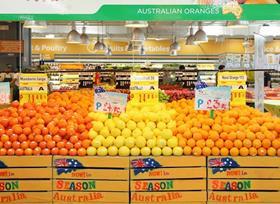
China continues to underline its status as a core market for Australia’s citrus trade, absorbing just under 40,000 tonnes of fruit over the 2016 season.
The performance made the People’s Republic the Australian industry’s largest market by volume and value, with sales generating $A72m. Japan followed close behind, with around 38,000 tonnes of citrus sold to the North Asian nation at a value of $A54m.
“Hong Kong also recorded strong volumes, although a substantial decrease on the previous season with around 30,000 tonnes exported this season, down from 45,000 tonnes in 2015,” explained Citrus Australia’s market manager, David Daniels.
“However, trade volumes into Greater China (Hong Kong, Taiwan and mainland China) appear to be quite static at around 75,000 tonnes per annum.”
The 2016 season was another record breaking campaign for the citrus sector, with total citrus exports almost reaching 220,000 tonnes – an increase of 7.4 per cent on 2015 – while a reported FOB value of $A328.5m marks a 17.2 per cent increase on the previous year.
Oranges again accounted for the lion’s share of exports, with shipments totalling 166,000t (A$223m).
Around 3,400 tonnes of lemons and 1,000 tonnes of grapefruit were also exported, while a global trend towards easy-peel fruit means mandarin exports continue to gain traction, with 49,000 tonnes (A$95m) sent in 2016.
Thailand looms as a key market for this trade, with mandarins making up close to 90 per cent of the 9,000 tonnes shipped to this market. Queensland-grown fruit accounted for around 7,500 tonnes of the Thai trade, while South Australia sent around 1,000 tonnes.
Singapore, Indonesia and Malaysia all recorded volumes around the 12,000 tonne mark for 2016, while Daniels noted the industry was pleasantly surprised with market development in other areas of Asia and beyond.
“Canada and the Philippines both provided small surprises, recording volumes just over 6,000 tonnes. Vietnam was just over 3,000 tonnes, whereas previously the record was 1,300 tonnes,” he said.
The US market has continued to decline somewhat, with 9,000 tonnes shipped there in 2016, down from 10,000 tonnes the previous season.



